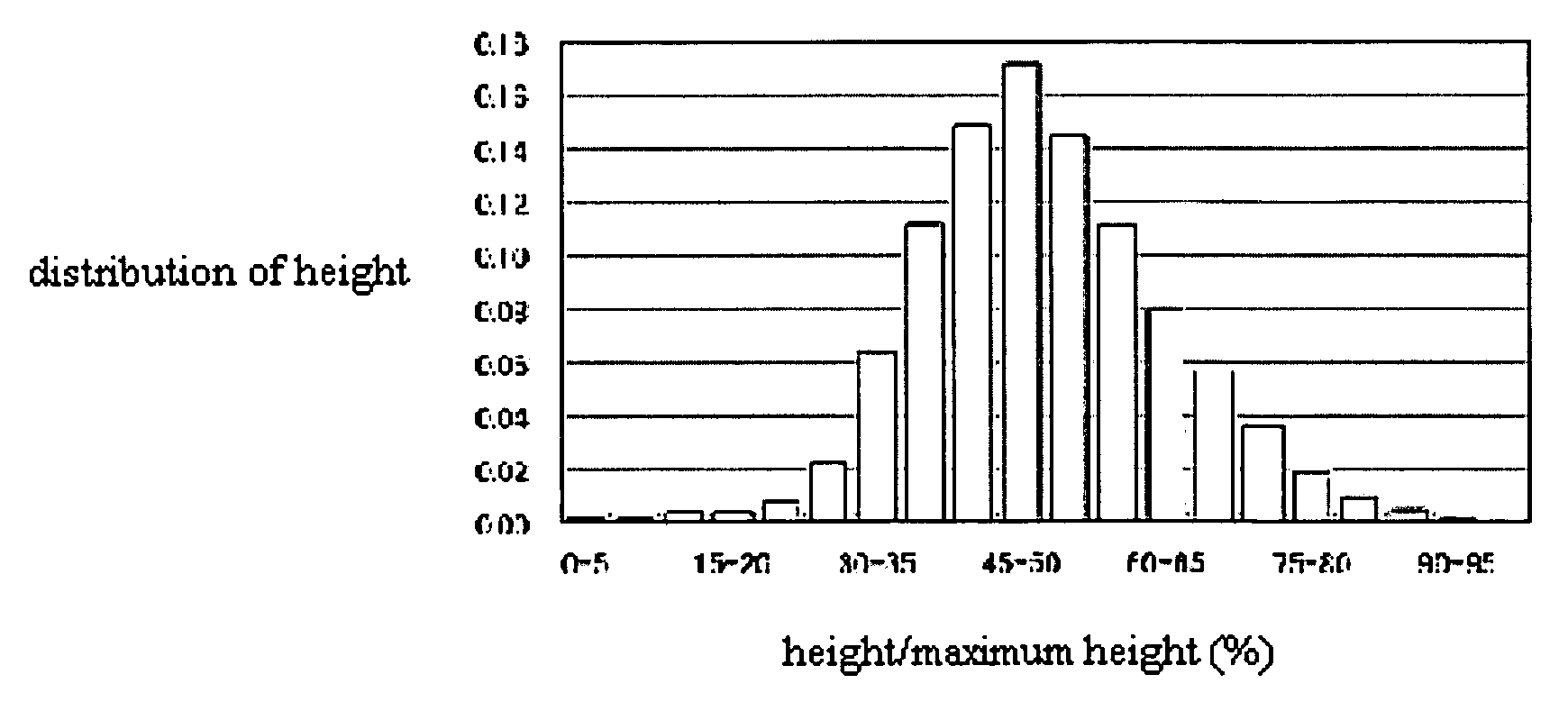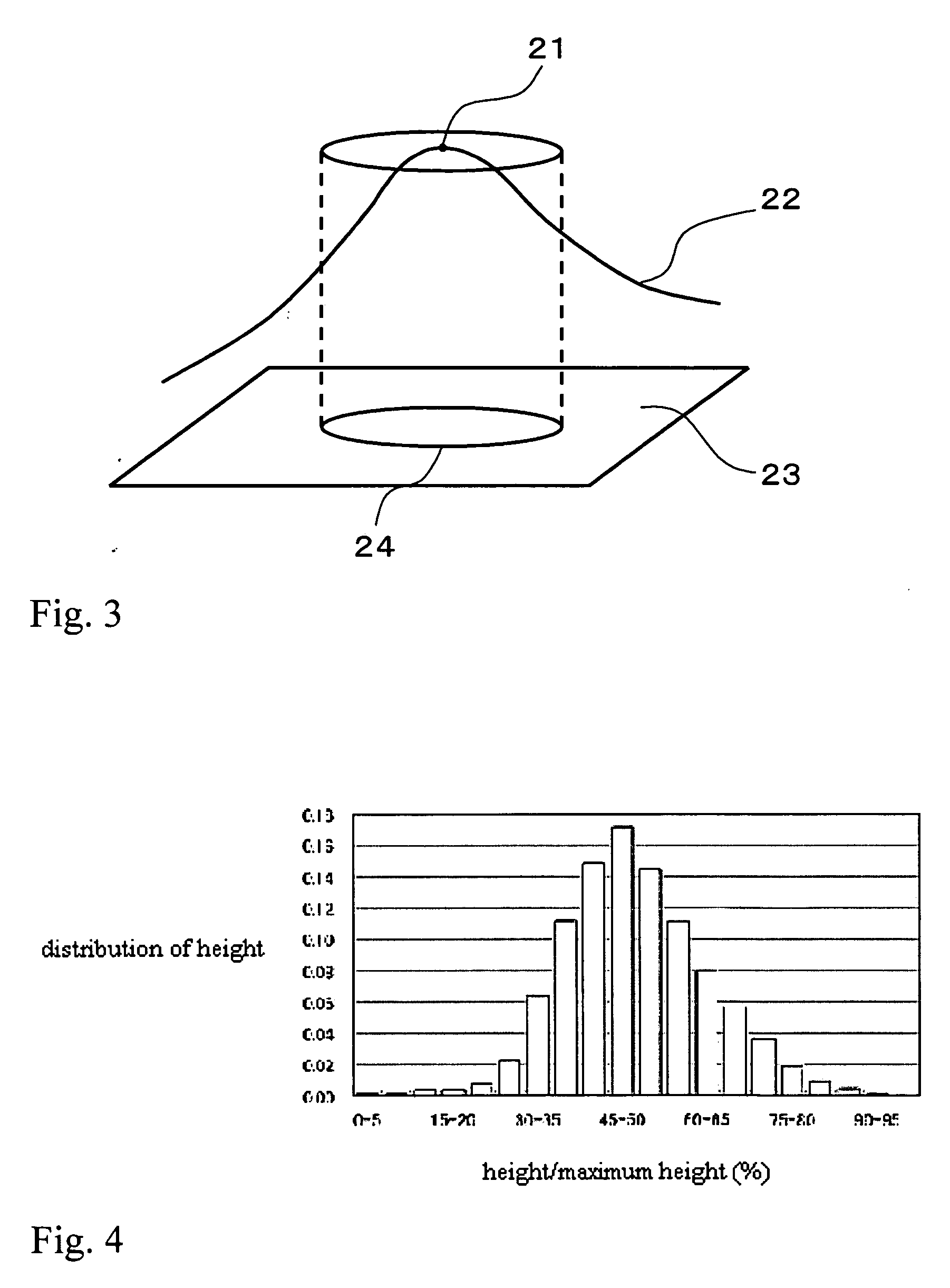Antiglare film and image display
a technology applied in the field of antiglare film and image display, can solve the problems of unevenness as intended, increase in cost, and significant deterioration of image display visibility, and achieve excellent antiglare performance and prevent visibility from lowering
- Summary
- Abstract
- Description
- Claims
- Application Information
AI Technical Summary
Benefits of technology
Problems solved by technology
Method used
Image
Examples
example 1
[0123] The surface of an aluminum roll (A5056 according to JIS) having a diameter of 300 mm was polished to a mirror surface. Zirconia beads “TZ-SX-17”, made by Tosoh Corporation (trademark, having an average grain diameter of 20 mm), were blasted onto the outer surface of the gained aluminum roll polished to a mirror surface under a pressure for blasting at 0.1 MPa (gauge pressure, same as in the following), using a blasting apparatus (gained from Fuji Manufacturing Co., Ltd.) so that unevenness was created on the surface. An electroless gloss nickel plating process was carried out on the gained uneven aluminum roll, and thus, a metal mold was fabricated. The thickness of the plating was set at 15 μm, and the thickness of the plating was measured after plating using a β ray film thickness measuring instrument (trademark: “Fisher Scope MMS”, gained from Fischer Instruments K.K.) so as to find that the thickness was 17.2 μm.
[0124] Separately, a photo-curing resin composite “GRANDIC ...
examples 2 to 6
[0126] Metal molds with various plating thickness having unevenness on the surface as shown in Table 1, and with other factors being the same as in Example 1, were fabricated. Transparent antiglare films, which are multilayer bodies made of a cured resin having unevenness on the surface and a TAC film, were fabricated in the same manner as in Example 1, using the respective molds. Optical properties of the gained antiglare films are shown in Table 1, and the results of the evaluation of the form of the uneven surface and the antiglare performance are shown in Table 2, respectively. In addition, as for Example 2, a graph of the reflection profile is shown in FIG. 10 together with the results of Example 1, and the histogram of height is shown in FIG. 11 together with the results of Example 1, respectively. As for Examples 3 and 4, the graphs of the respective reflection profiles are shown in FIG. 12, and the histograms of height are shown in FIG. 13, respectively, and in addition, as ...
PUM
 Login to View More
Login to View More Abstract
Description
Claims
Application Information
 Login to View More
Login to View More - R&D
- Intellectual Property
- Life Sciences
- Materials
- Tech Scout
- Unparalleled Data Quality
- Higher Quality Content
- 60% Fewer Hallucinations
Browse by: Latest US Patents, China's latest patents, Technical Efficacy Thesaurus, Application Domain, Technology Topic, Popular Technical Reports.
© 2025 PatSnap. All rights reserved.Legal|Privacy policy|Modern Slavery Act Transparency Statement|Sitemap|About US| Contact US: help@patsnap.com



